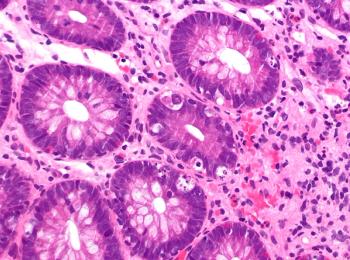
Exercise Reduced Cardiovascular Events in Survivors of Childhood Lymphoma
Survivors of childhood Hodgkin lymphoma who went on to regularly complete vigorous exercise had a lower risk of cardiovascular events later in life.
Survivors of childhood Hodgkin lymphoma who went on to regularly complete vigorous exercise had a lower risk of cardiovascular events, independent of their cardiovascular risk profile, than those survivors who did not exercise regularly.
In fact, a study
“Our findings indicate that adoption of regular exercise consistent with national vigorous exercise recommendations in currently sedentary survivors could confer substantial public health benefits in the rapidly growing population of survivors of childhood cancer,” wrote study author Lee W. Jones, PhD, of Memorial Sloan Kettering Cancer Center, and colleagues.
Prior research has proven that survivors of childhood Hodgkin lymphoma are at an increased risk for premature cardiovascular morbidity and mortality. For this reason, various preventive strategies have been researched in this patient population.
In this study, Jones and colleagues hypothesized that exercise would reduce the risk of major cardiovascular events in a dose-dependent manner. To assess this theory, they studied 1,187 survivors of Hodgkin lymphoma who completed a questionnaire evaluating vigorous-intensity exercise. Exercise was calculated in MET hours per week. The primary endpoint of the study was incidence of any major cardiovascular events.
During a median of 11.9 years of follow-up, 135 cardiovascular events occurred. Among survivors reporting 0 MET hours, the incidence of any cardiovascular event at 10 years was 12.2% compared with 5.2% for those reporting 9 or more MET hours.
After multivariable analysis that adjusted for age, race, smoking, cardiovascular risk factors, anthracycline use, and chest radiation exposure, the researchers found an inverse relationship between total amount of vigorous exercise and the incidence of cardiovascular events. Patients who met the guidelines of maintaining vigorous exercise for 9 or more MET hours had an adjusted 51% decreased risk for any cardiovascular events compared with those getting less than 9 MET hours.
“Our data create a strong rationale for the development of a systematic research agenda to investigate the efficacy of aerobic exercise to prevent and/or delay treatment-associated cardiovascular toxicity in survivors of Hodgkin lymphomas,” the researchers wrote. “Important currently unanswered questions include identification of the optimal timing (during and/or after treatment exposure), as well as intensity and dose of exercise to prevent/delay cardiovascular toxicity.”
Newsletter
Stay up to date on recent advances in the multidisciplinary approach to cancer.

















































































